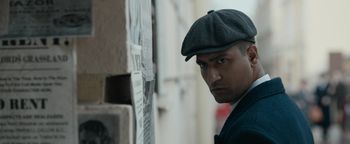The recent movie Sardar Udham can evoke mixed reactions. On the one hand, Udham Singh’s story needs to be told. In an act of determined revenge, he shot Sir Michael O’Dwyer in London after a 21-year wait. O’Dwyer, an arch imperialist, had ruled Punjab as lieutenant governor with an iron hand, squeezed the province for men and materials during the Great War and approved General Dyer’s indefensible firing on a peaceful crowd in Jallianwala Bagh. His assassination was dismissed as “an act of insanity” by Mahatma Gandhi and rehabilitation had to wait till 1974 when Udham Singh’s remains were exhumed from London’s Pentonville prison and brought home with due honours.
However, some editorial choices in the film make one uneasy, highlighting the essential dilemma: how much can a real-life person be fictionalised? One view is that within broad contours, artistic imagination can be given full play. A more conservative approach counsels that history be handled with care; your book, or in this case, your film may become the definitive version for someone.
Foremost is the vexed question: was Udham Singh present in Jallianwala Bagh on that fateful day? Popular legends thrive: he was serving water to the crowd and was wounded in the arm; he helped a woman, Ratan Devi, help find her dead husband; he swore vengeance on the perpetrators at the Golden Temple. But clear evidence is lacking, so professional historians tend to skirt the point. Though it is beyond doubt that the event impacted him deeply, only he knew where exactly he was that day. During his trial at the Old Bailey, he stated clearly: “I did not know who was the governor at that time when the shooting took place because I had gone to East Africa at that time. I was not in India at the time.”
Granted that Udham Singh was a master of the feint. But facing death penalty, and having achieved his objective, he had little reason to dissemble. Linking his act to a personal experience of Jallianwala Bagh would have given a greater heroic twist to his story; the British establishment was trying hard to present him as an unhinged assassin, unlinked to the freedom struggle. Yet Singh does not recall any personal experience of Jallianwala Bagh in court. But the film is graphic in showing him in the Bagh after the shooting, carting dozens of bodies to hospital. For those who read nothing else about him, these scenes will become history.
The film depicts a large number of women and girls among Dyer’s victims. Those who have sifted through lists of victims and the compensated believe that the gathering was largely a male affair, though it did include young boys. Of the 152 testimonies on Amritsar that the Congress Punjab Inquiry, led by Mahatma Gandhi, published, only 15 are by women. With the sole exception of Ratan Devi mentioned above, all relate to the crawling order and other excesses and not to the Jallianwala Bagh shooting.
Several other inaccuracies abound. Though Udham Singh regarded the much younger Bhagat Singh as his guru, they were not the close companions depicted in the movie; Udham Singh was serving out a five-year prison term when Bhagat Singh was tried and hanged. The familiarity between him and O’Dwyer shown in the movie has been denied by the latter’s family. Udham Singh knew several women and even had a Mexican wife, but the movie prefers a Punjabi maiden as the ‘love interest.’
If the filmmakers do not clarify these artistic departures, they run the risk of riding roughshod over history. But then, do we really care?
The writer is a former high commissioner of India to the UK and ambassador to the US.


